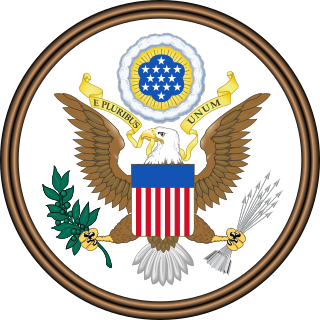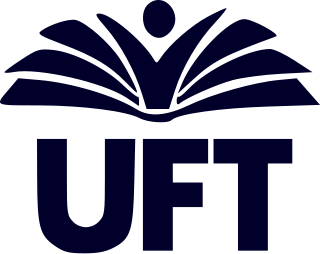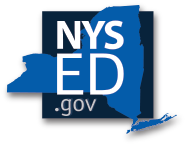
A teacher, also called a schoolteacher or formally an educator, is a person who helps students to acquire knowledge, competence, or virtue, via the practice of teaching.

The No Child Left Behind Act of 2001 (NCLB) was a U.S. Act of Congress promoted by the Presidency of George W. Bush. It reauthorized the Elementary and Secondary Education Act and included Title I provisions applying to disadvantaged students. It mandated standards-based education reform based on the premise that setting high standards and establishing measurable goals could improve individual outcomes in education. To receive federal school funding, states had to create and give assessments to all students at select grade levels.

The National Education Association (NEA) is the largest labor union in the United States. It represents public school teachers and other support personnel, faculty and staffers at colleges and universities, retired educators, and college students preparing to become teachers. The NEA has just under 3 million members and is headquartered in Washington, D.C. The NEA had a budget of more than $341 million for the 2012–2013 fiscal year. Becky Pringle is the NEA's current president.
The Boards of Cooperative Educational Services is a program of shared educational services provided to school districts by the New York State Legislature.

Keene State College is a public liberal arts college in Keene, New Hampshire. It is part of the University System of New Hampshire. Founded in 1909 as a teacher's college, Keene State College had 3,104 students enrolled for credit as of fall 2021.

The Individuals with Disabilities Education Act (IDEA) is a piece of American legislation that ensures students with a disability are provided with a Free Appropriate Public Education (FAPE) that is tailored to their individual needs. IDEA was previously known as the Education for All Handicapped Children Act (EHA) from 1975 to 1990. In 1990, the United States Congress reauthorized EHA and changed the title to IDEA. Overall, the goal of IDEA is to provide children with disabilities the same opportunity for education as those students who do not have a disability.
An Individualized Education Program (IEP) is a legal document under United States law that is developed for each public school child in the U.S. who needs special education. It is created through a team of the child's parent(s), the student and district personnel who are knowledgeable about the child's needs. IEPs must be reviewed every year to keep track of the child's educational progress.

The United Federation of Teachers (UFT) is the labor union that represents most teachers in New York City public schools. As of 2005, there were about 118,000 in-service teachers and nearly 30,000 paraprofessional educators in the union, as well as about 54,000 retired members. In October 2007, 28,280 home day care providers voted to join the union. It is affiliated with the American Federation of Teachers, the AFL–CIO and the Central Labor Council. It is also the largest member of New York State United Teachers, which is affiliated with the National Educational Association and Education International.

Western Governors University (WGU) is a private, non-profit online university based in Millcreek, Utah, United States. The university uses an online competency-based learning model, providing advanced education for working professionals. Degrees awarded by WGU are accredited by the Northwest Commission on Colleges and Universities (NWCCU). The university was founded by 19 U.S. governors in 1997, after the idea was formulated at a 1995 meeting of the Western Governors Association to expand education offerings to the internet.
Adequate Yearly Progress (AYP) was a measurement defined by the United States federal No Child Left Behind Act that allowed the U.S. Department of Education to determine how every public school and school district in the country was performing academically according to results on standardized tests. As defined by National Council on Measurement in Education (NCME), AYP was "the amount of annual achievement growth to be expected by students in a particular school, district, or state in the U.S. federal accountability system, No Child Left Behind (NCLB)." AYP has been identified as one of the sources of controversy surrounding George W. Bush administration's Elementary and Secondary Education Act. Private schools were not required to make AYP.

The New York State Education Department (NYSED) is the department of the New York state government responsible for the supervision for all public schools in New York and all standardized testing, as well as the production and administration of state tests and Regents Examinations. In addition, the State Education Department oversees higher education, cultural institutions such as museums and libraries, vocational rehabilitation, and the licensing of numerous professions. It is headed by the Board of Regents of the University of the State of New York (USNY) and administered by the Commissioner of Education.

The New Jersey School Report Card is an annual report produced each year by the New Jersey Department of Education for all school districts and schools in the U.S. state of New Jersey. The current School Report Card presents thirty-five fields of information for each school in the following categories: school environment, students, student performance indicators, staff, and district finances; however, initially the cards provided far less information.
Special education in the United States enables students with exceptional learning needs to access resources through special education programs. These programs did not always exist. "The idea of excluding students with any disability from public school education can be traced back to 1893, when the Massachusetts Supreme Court expelled a student merely due to poor academic ability". This exclusion would be the basis of education for all individuals with special needs for years to come. In 1954, Brown v. Board of Education sparked the belief that the right to a public education applies to all individuals regardless of race, gender, or disability. Finally, special education programs in the United States were made mandatory in 1975 when the United States Congress passed the Education for All Handicapped Children Act (EAHCA) "(sometimes referred to using the acronyms EAHCA or EHA, or Public Law 94-142) was enacted by the United States Congress in 1975, in response to discriminatory treatment by public educational agencies against students with disabilities." The EAHCA was later modified to strengthen protections to students with disabilities and renamed the Individuals with Disabilities Education Act (IDEA). IDEA requires states to provide special education and related services consistent with federal standards as a condition of receiving federal funds.
The School Teachers' Pay and Conditions Document (STPCD) is an annually-published document which forms a part of the contract of all teachers and head teachers in maintained schools in England and Wales. The document is binding on all maintained schools and local education authorities.

The Oklahoma State Department of Education is the state education agency of the State of Oklahoma charged with determining the policies and directing the administration and supervision of the public school system of Oklahoma. The State Board of Education, the governing body of the Department, is composed of the Oklahoma State Superintendent of Public Instruction and six members appointed by the Governor of Oklahoma with the approval of the Oklahoma Senate. The State Superintendent, in addition to serving as chair of the Board, serves as the chief executive officer of the Department and is elected by the voters of Oklahoma every four years.

The Florida Department of Education (FLDOE) is the state education agency of Florida. It governs public education and manages funding and testing for local educational agencies. It is headquartered in the Turlington Building in Tallahassee.
The Rhode Island Department of Education (RIDE) is a state agency in Rhode Island that oversees the elementary and secondary education system from pre-Kindergarten through twelfth grade. It is headquartered in Providence. RIDE works closely with the Rhode Island Office of the Postsecondary Commissioner (RIOPC), the agency charged with overseeing higher education. Together, RIDE and RIOPC aim to provide an aligned, cohesive, and comprehensive education for all students.

Race to the Top was a $4.35 billion United States Department of Education competitive grant created to spur and reward innovation and reforms in state and local district K–12 education. Funded as part of the American Recovery and Reinvestment Act of 2009, it was announced by President Barack Obama and Secretary of Education Arne Duncan on July 24, 2009. States competing for the grants were awarded points for enacting certain educational policies, instituting performance-based evaluations for teachers and principals based on multiple measures of educator effectiveness, adopting common standards, adopting policies that did not prohibit the expansion of high-quality charter schools, turning around the lowest-performing schools, and building and using data systems.
Charter schools operate with considerably more independence than traditional public schools. However, Massachusetts has two kinds of charter schools - Commonwealth Charters and Horace Mann Charters. Horace Mann charter schools differ from Commonwealth charter schools as they must be located within a school district. Both kinds of charter schools are free to structure their curriculum and school environment; for instance, many charter schools fit more instructional hours into a year by running longer school days and providing instruction on weekends and during the summer. Because few charter schools are unionized, they can hire and fire teachers and administrative staff without regard to the collectively bargained seniority and tenure provisions that constrain such decisions in most public schools. Although charter students made up only 2.9 percent of U.S. public school enrollment in 2008–2009, charter enrollment has grown rapidly and seems likely to accelerate in the near future. The growth of charter schools is an important component of the contemporary education reform movement's pursuit of accountability and flexibility in public education. Proponents see charter schools' freedom from regulation as a source of educational innovation, with the added benefit of providing a source of competition that may prompt innovation and improvement in the rest of the public system. At the same time, charter schools are controversial because, after a transition period in which the state provides subsidies, they receive a tuition payment for each enrolled student paid by students' home districts. In Massachusetts, tuition payments are determined largely by the average per-pupil expenditure in sending districts. Not surprisingly, therefore, public school districts are concerned about the revenue lost when their students enroll in charter schools.
The highly qualified teacher provision is one of the goals of the No Child Left Behind Act (NCLB) of 2001. The term highly qualified teachers (HQT) comes from the original language of Title II of the No Child Left Behind Act. Title II of NCLB designates federal funds to educational agencies for the purpose of improving the student achievement through the professional development of highly qualified teachers and principals. To qualify for this funding, states must comply with a series of conditions stipulated in NCLB, and track their progress toward goals each state sets. Title II was originally known as the Eisenhower Professional Development Program, and has undergone several reauthorizations, though the original intent has remained relatively intact. The main goals of the highly qualified teacher provision is to ensure that every classroom is staffed by a teacher deemed "highly qualified" under conditions set by NCLB. As some point out, this section of NCLB is quite at odds with the general thrust of NCLB because it focuses on school inputs rather than student outcomes. The sections of NCLB designated to HQTs allocates the majority of the funds to the states and does not clearly define at the federal level what is and what is not a highly qualified teacher, allowing for more local definitions of this term. This provision has come under much scrutiny, as it is up to states to decide how to measure highly qualified, and states are not holding their teachers to the same level of rigor across the country. Since its reauthorization in 2001, Title II has yet to reach its stated goal of ensuring that 100% of teachers in public schools in the United States are highly qualified.










